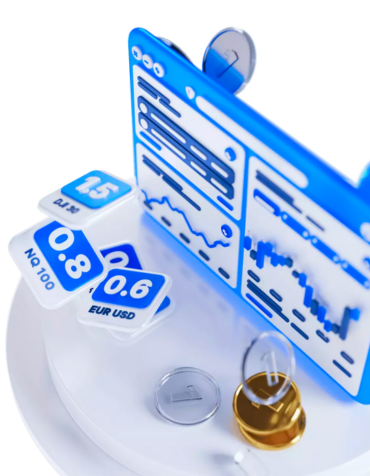We round up the best brokers that we believe offer best value for forex traders.





Trading the EURJPY forex pair involves buying or selling it in the foreign exchange (forex) market. Here are the basic steps to trade EURJPY:
To trade any forex pair, including EURJPY, you'll need to open an account with a reputable forex broker. Ensure that the broker offers access to this specific EURJPY pair.
Deposit funds into your forex trading account. The amount you deposit will determine the size of your trading positions.
Before making any trades, perform a thorough analysis of the EURJPY pair. This analysis typically involves fundamental analysis (economic data, interest rates, geopolitical events) and technical analysis (price charts, indicators) to determine your trading strategy.
Most brokers offer trading platforms that allow you to execute trades. Familiarize yourself with the platform's interface and tools.
Choose whether you want to buy (long) or sell (short) the EURJPY pair based on your analysis. Enter the trade order on your trading platform, specifying the amount (lot size) you wish to trade.
Executes the trade immediately at the current market price.
Sets a specific price at which you want your trade to be executed.
Sets a price at which your trade will be triggered if the market moves in a certain direction.
To manage risk, consider setting stop-loss orders to limit potential losses and take-profit orders to lock in profits at a certain price level.
Once your trade is executed, monitor the EURJPY pair's price movement. Keep an eye on news and events that may impact the exchange rate.
When you achieve your trading objectives, either manually close the trade or wait for your predetermined take-profit or stop-loss levels to be reached.
After closing your trade, assess the outcome. Review your trading strategy and learn from both successful and unsuccessful trades to improve your skills.
Always practice proper risk management. Never risk more than you can afford to lose, and consider using leverage cautiously if available.
For the breakout strategy, start by looking at the EURJPY chart and find key support and resistance levels. Once you've identified these levels, wait for a breakout either above a strong resistance level or below a significant support level. To confirm the breakout, keep an eye on increasing volume or other technical indicators like moving averages or oscillators. If there's a bullish breakout, go ahead and place a buy trade; if it's a bearish breakout, place a sell trade instead. Don't forget to set stop-loss orders below the breakout point to limit potential losses and take-profit orders at an appropriate target level.
Now let's talk about the moving average crossover strategy. This one involves applying two moving averages (like 50-day and 200-day) on the EURJPY chart. Keep an eye out for periods when the shorter-term moving average crosses above or below the longer-term moving average. When you see a bullish crossover (shorter MA crossing above longer MA), consider opening long positions; if it's a bearish crossover (shorter MA crossing below longer MA), think about opening short positions instead. Use additional technical indicators like RSI or MACD to confirm your entry and exit signals. And of course, don't forget to set stop-loss orders to minimize potential losses while considering trailing stops as prices move in your favor.
Lastly, let's look at Fibonacci retracement strategy. Start by identifying recent swing highs and lows on the EURJPY chart. Then apply Fibonacci retracement levels (38.2%, 50%, and 61.8%) between these swing points using drawing tools available on most trading platforms. During an uptrend, consider taking long positions near retracement levels as you expect prices to bounce off these levels and continue rising; during downtrends, take short positions near retracement levels as you expect prices to bounce off these levels and continue falling instead.
To confirm potential reversals at Fibonacci levels, use other technical indicators like the stochastic oscillator or RSI. Place stop-loss orders below or above the retracement level being tested and set take-profit orders before the next significant resistance or support level.
That's it! These are three strategies you can consider when trading EURJPY.